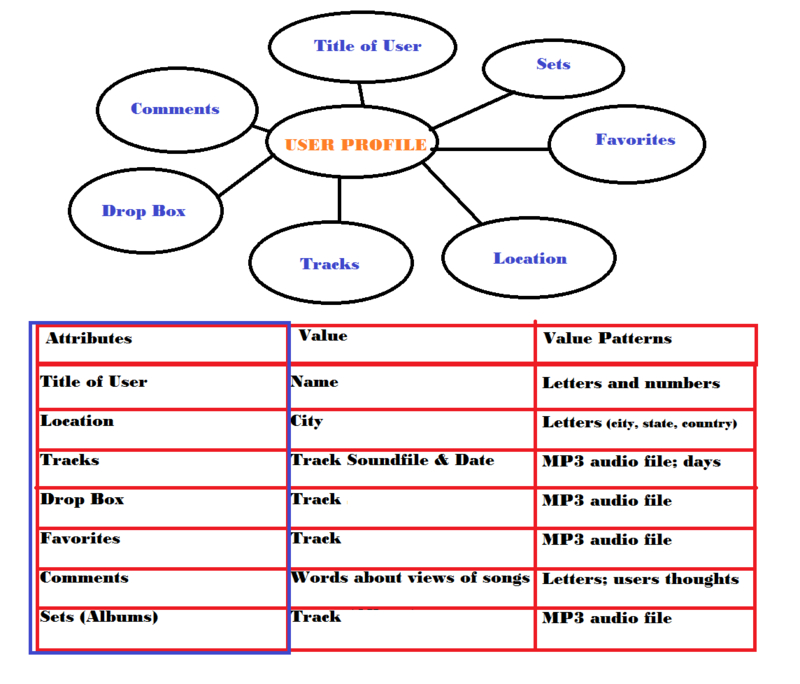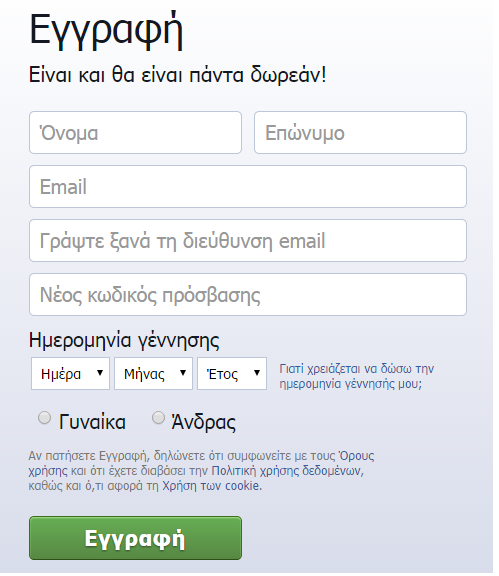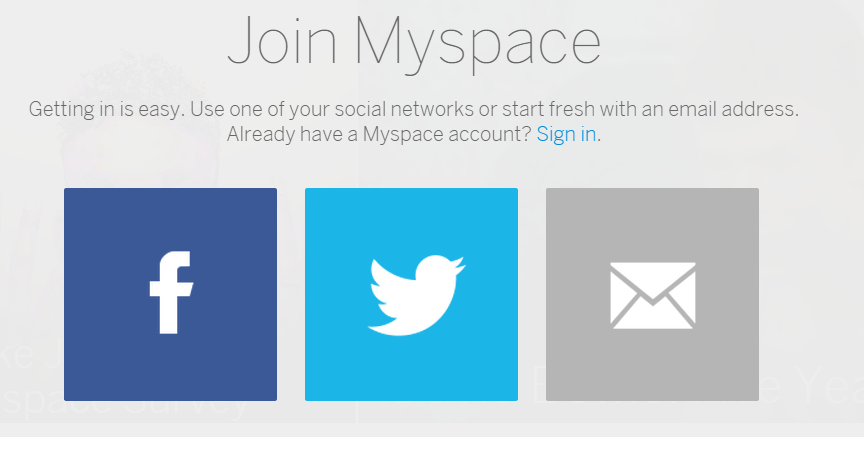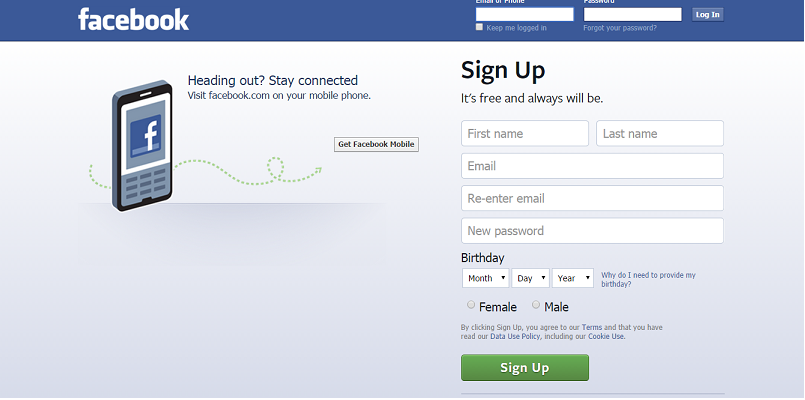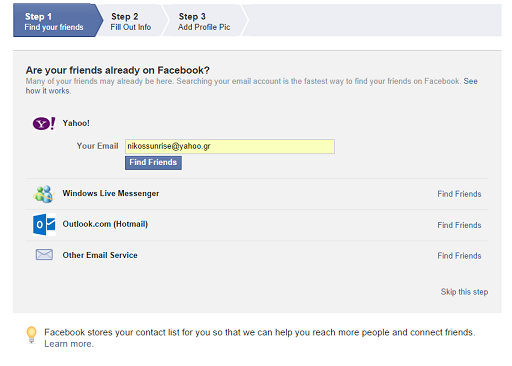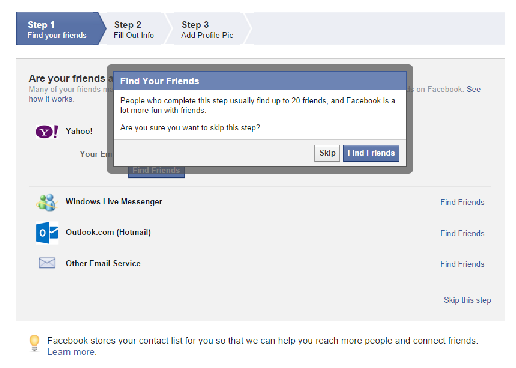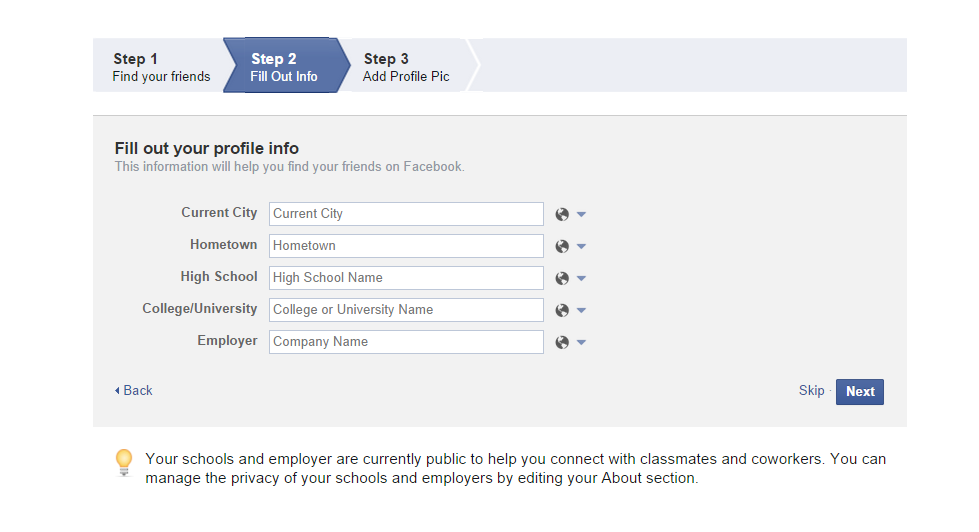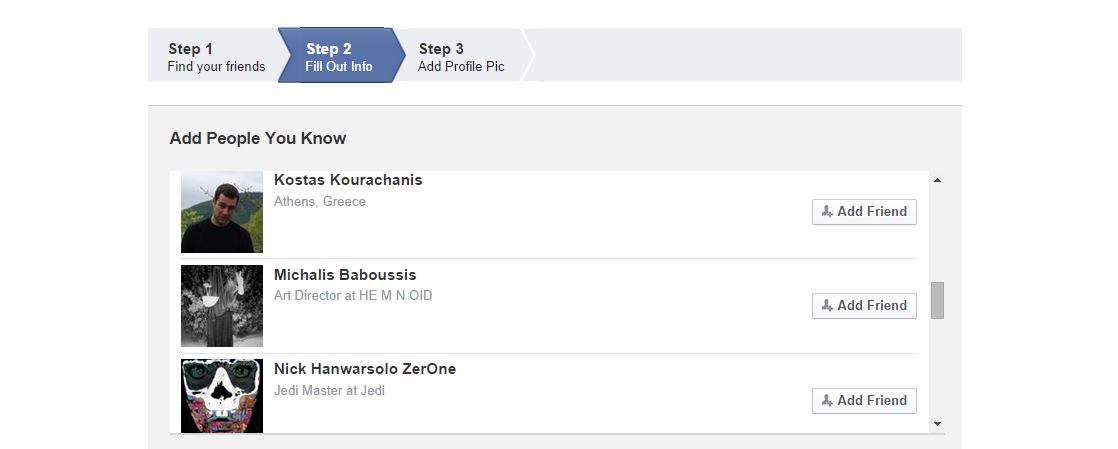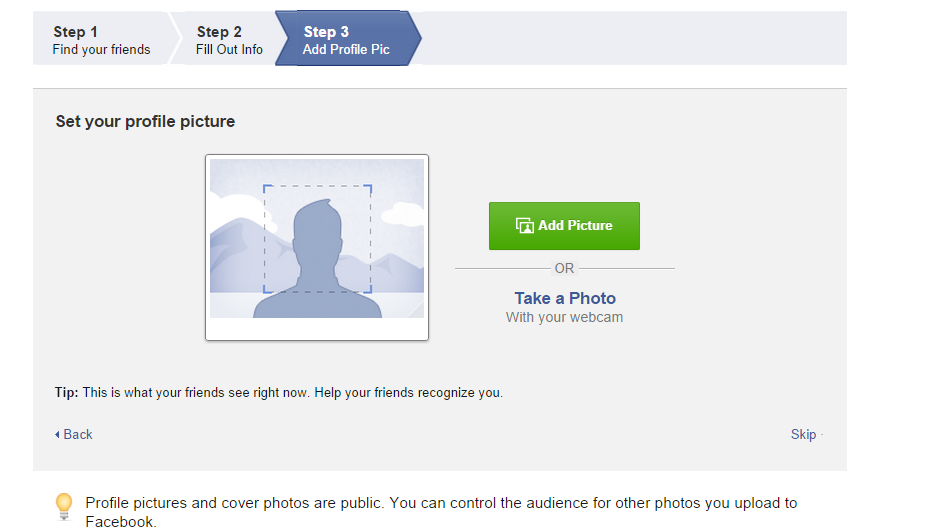Mediaobjectnikosssss: Difference between revisions
No edit summary |
No edit summary |
||
| Line 3: | Line 3: | ||
[[File:cross.png|160x152px|framed|right|integrity]] | [[File:cross.png|160x152px|framed|right|integrity]] | ||
'''introduction''' | |||
User profile is supposed to digitaly represent one s identity 1 but it is forming and constructing the individual, particularly in the online world. As a media object it talks about identity curation and construction, power and control, social hierarchies.As a collection of settings and structured metadata it documents the users identity while forming it through the selection from a limited range of choices and provides a template for exercise of control between corporation and their user and among users themselves. | |||
User profiles are very common new media objects and can be found in operating systems and in online services and websites, chatrooms and forums . Their existence and growth has been in parallel with the transition from earlier web to the cloud. Social networking, Web2.0 and personalisation of information and services are based upon user profiles. | |||
'''user profile''' | |||
According to Microsoft, "your user profile is a collection of settings that make the computer look and work the way you want it to. It contains your settings for desktop backgrounds, screen savers, pointer preferences, sound settings, and other features. User profiles ensure that your personal preferences are used whenever you log on to Windows. A user profile is different from a user account, which you use to log on to Windows. Each user account has at least one user profile associated with it.2 | |||
According to Facebook, "Your profile, is your collection of the photos, stories and experiences that tell your story. Your profile also includes your Timeline". This definition can be found in their Glossary of Terms, where other interesting approaches can be found (what is a friend?Friends are people you connect and share with on Facebook and what is a list?Lists are an optional way to organize your friends on Facebook. )3 | |||
Outside the corporate definition framework one can see that user profiles are attached to the concepts of customisation, authentication, identification and engage the individual in a process of terms and rules accepting. They are collections of settings and metadata associated with a specific user. And they differ from user accounts as a more public expression of them. However, to create a profile one must create an account, either in operating systems or in social networking services. Both accounts and profiles are subject to archiving from the providers and offer a great documentation of the individual which happens silmutaneously with the profile construction. As Facebooks puts its, the user profile is the collection that tells our story. | |||
This process of building ones user profile beginns indeed with an account creation(registration ),accepting terms of services, and verification (via personal email),and later on moves to public profile construction, adjusting personalised settings and filling personal information in existing categories. | |||
The design model of the user profile is the one of the database. Moreover this database driven formation of the online profile is happening within online structures that are themselves databases. | |||
It seems that identity and database have a structural relationship in the world of user profiles. According to Mark Poster, because of its structure contitutes individuals by manipulating bits of information4 . This illustrates how an identity is formed within a user profile: through language , data entries and the relationships formed among data within the database. Manovich 5 | |||
'''mediation''' | |||
Profile is a linguistic construction that mediates a social construction: one;s identity/ies. By providing a very controled space and using controled vocabulary puts the individual in the position to enter data in the database that will regenerate the persons identity in the context of that system. This linguistic construction mediates at the same time the choices of the individual alltough they are hosted in very simplistic and restricting forms and they are not endless choices but choices from a list.>>> The use of these choices, from food preferences to the choices that affect what kind of data we contribute, show that our user profiles mediate also a controled curation of identity. It is this controlled curation that illustrates the technolibertarian utopias related to identity exploration and alternative identities. | |||
User profile assigns also that identity with specific regulations , duties and rights predetermined, therefore mediates power relations and control. These relationships are formed not only between the institution/corporation and the user but even among users themself. A feature of facebook, the report of a user, is examplary of that. Again this relationships can be traced as well within one's self: one of one;s identities controling another.Furthermore, power and control are based on the practise of one documenting him/herself while creating all this accounts and profiles. From a preselected range of choices, understandable from computers, one is documenting in a written record him self by self-classification and data entering. The public side of the record is visible when the profiles are active. But when they get deactivated or deleted or reported then the social networking company is the only one who has in its hands the documentation record. | |||
' | It also mediates certain hierarchies, within society and within one 's self. In order to create a profile in a social network for example one has to be present through ones account in an operating system, lets say Windows. And reversed, ones online profiles lead back to ones profile in the operating system. Maintaining profiles in operating systems involves again hierachies, by distinguishing administrators by user and assigining specific regulations or rights to them. In the online context, the administrator of our profiles becomes the webservice providor, the corporation. | ||
( | structural issues and information collections (from back to front), name MAIL password pic, fields,caterogies | ||
''' | '''(nick)Name.''' The history of chatrooms, forums and social networking sites proves that the "real" name of a user was and is not always needed in the formation of ones profile. Chatrooms for example have been requiring users to create profiles under nicknames asking for their email of course for "verification" reasons. There are plenty websites that are web2.0 products that require one to create a profile in order to construct his/her collections. A good example would be Pinterest. In their majority these webservices allow user to use a fictional name in their profile. Lately, Facebook and Google+ have been doing important movements related to user names. Facebook and its strict policy which is under ongoing acceleration, with the latest news to include the exclusion of drag-queens using stage names. Their alternative for all these users is to create a Fun page. Google+ is another POLICY SOS WHAT HTEY ESAY???interesting example. Tim Carmody calls it " Social media as a means to establishing identity"6. He continues that Google wants your real name because simply it has much more value in advertising, to cross relate your account to your buying behaviour. | ||
its interesting to observe the differencies in policies from lets say fb to google+, and the importance of users feedback in this decisions_+article google+ and identity. In come cases usernames and names given in the account creation are the same but not always.+fb names, alternative name etc. | |||
'''Portrait''' is a very visual but also psychological concept that can be found in any kind of art and includes normally a face and its charakteristics. In modern society , portrait relates with photography as a means to understand , monitor and document the world and the individual. Gallison and Daston in their book Objectivity comment on the relation of the lense(from microscopes to cameras) with scientific objectivity, which they see a the suppression of some aspect of the self 7. Moreover, Evi Sambanikoy source 8writes about the photographer as the reporter of the objectified subject.8 Here i m interested in the majority of users that make use of photographic portraits and not drawing/paintings. | |||
Our portraits in our user profiles are our profile pics. The selfie corresponds to the "democratisation" of the use of the camera by individuals and appears succesfull in motivating people document themselves online.Ludovico and Cirio, in their "facetofacebook:smiling in the eternal party" refer to the face as the viewpoint as a major point of reference in the world, stronger even than names .They also argue that facebook profiles are so effecting in representing real people through a a specifi element:the profile picture.9 | |||
''' | '''email''' | ||
E mail is used here in order to offer the company a "verification" that we are humans and that we consiously create our profile. It is also used in order to extract data about our emailing list and to force connectivity from the beginning of our profile life. | |||
''' | '''Password''' | ||
a PASSword makes it perfektly clear that the access to the online self is through language codes. Is serves as the greatest application of personalisation with regards to privacy and security. Still, creating passwords online can always be surveilled by corporations which offer the whole environment of password creation. Passwords are also subject to computer viruses. So the self can be hacked, as Terence mc Keena says.? souce 10 | |||
STALLMAN STORY 11 | |||
'''social networking and user profiles''' | |||
process of becoming (screenshots interpretation() | |||
categories and protokols elaboration | |||
SCREENSHOTS FB | |||
'''conclusions''' | |||
User profiles are linguistic constructions, which occur in very linguistic structures, starting from the source code of websites we use to computers as linguistic devices and our linguistic-textual participation) and are the constructions that produce the self on the online user. | |||
creates algormithmically indiiduals by suggestins friends , likes, trying to create a COHERENT INDENTITY, A stable one, restricted from protocols, archived, connected stratigicaly , unified, | |||
database-narrative no manovich---story that faceboks says is a problematic by definition | |||
of course we now its not about the story but about the human as a statistical entity | |||
profiles as ling constructions that mediate corporate control participatory control ,comvine them with other tecnhologies like ludovikosays f.e face recognition | |||
but mainly is not representing the individual is CONTRUCTING IT algorimthically and on data structures | |||
'''sources''' | |||
1. User Profile, wikipedia | |||
2. What is your user profile, Microsoft, | |||
3. User Profile, Facebook glossary of terms | |||
4. Poster, Mark . The mode of information | |||
5. Manovich, Lev. Database as symbolic form | |||
6. Carmody, Tim.Google+ Identity Crisis: What’s at Stake With Real Names and Privacy | |||
7. Gallison and Daston. Objectivity. | |||
8. Sambanikou. | |||
9. Cirio and Ludowico, Face to facebook. | |||
10. Terence mc Keena, lecture; the world is made of language | |||
11. Stallman password story | |||
[[File:Fb1.png|120x112px|framed|none|]] | [[File:Fb1.png|120x112px|framed|none|]] | ||
| Line 73: | Line 103: | ||
+++++ | |||
User authentication , mozilla persona. | User authentication , mozilla persona. | ||
Revision as of 23:18, 6 October 2014
introduction
User profile is supposed to digitaly represent one s identity 1 but it is forming and constructing the individual, particularly in the online world. As a media object it talks about identity curation and construction, power and control, social hierarchies.As a collection of settings and structured metadata it documents the users identity while forming it through the selection from a limited range of choices and provides a template for exercise of control between corporation and their user and among users themselves. User profiles are very common new media objects and can be found in operating systems and in online services and websites, chatrooms and forums . Their existence and growth has been in parallel with the transition from earlier web to the cloud. Social networking, Web2.0 and personalisation of information and services are based upon user profiles.
user profile
According to Microsoft, "your user profile is a collection of settings that make the computer look and work the way you want it to. It contains your settings for desktop backgrounds, screen savers, pointer preferences, sound settings, and other features. User profiles ensure that your personal preferences are used whenever you log on to Windows. A user profile is different from a user account, which you use to log on to Windows. Each user account has at least one user profile associated with it.2
According to Facebook, "Your profile, is your collection of the photos, stories and experiences that tell your story. Your profile also includes your Timeline". This definition can be found in their Glossary of Terms, where other interesting approaches can be found (what is a friend?Friends are people you connect and share with on Facebook and what is a list?Lists are an optional way to organize your friends on Facebook. )3
Outside the corporate definition framework one can see that user profiles are attached to the concepts of customisation, authentication, identification and engage the individual in a process of terms and rules accepting. They are collections of settings and metadata associated with a specific user. And they differ from user accounts as a more public expression of them. However, to create a profile one must create an account, either in operating systems or in social networking services. Both accounts and profiles are subject to archiving from the providers and offer a great documentation of the individual which happens silmutaneously with the profile construction. As Facebooks puts its, the user profile is the collection that tells our story.
This process of building ones user profile beginns indeed with an account creation(registration ),accepting terms of services, and verification (via personal email),and later on moves to public profile construction, adjusting personalised settings and filling personal information in existing categories.
The design model of the user profile is the one of the database. Moreover this database driven formation of the online profile is happening within online structures that are themselves databases.
It seems that identity and database have a structural relationship in the world of user profiles. According to Mark Poster, because of its structure contitutes individuals by manipulating bits of information4 . This illustrates how an identity is formed within a user profile: through language , data entries and the relationships formed among data within the database. Manovich 5
mediation
Profile is a linguistic construction that mediates a social construction: one;s identity/ies. By providing a very controled space and using controled vocabulary puts the individual in the position to enter data in the database that will regenerate the persons identity in the context of that system. This linguistic construction mediates at the same time the choices of the individual alltough they are hosted in very simplistic and restricting forms and they are not endless choices but choices from a list.>>> The use of these choices, from food preferences to the choices that affect what kind of data we contribute, show that our user profiles mediate also a controled curation of identity. It is this controlled curation that illustrates the technolibertarian utopias related to identity exploration and alternative identities.
User profile assigns also that identity with specific regulations , duties and rights predetermined, therefore mediates power relations and control. These relationships are formed not only between the institution/corporation and the user but even among users themself. A feature of facebook, the report of a user, is examplary of that. Again this relationships can be traced as well within one's self: one of one;s identities controling another.Furthermore, power and control are based on the practise of one documenting him/herself while creating all this accounts and profiles. From a preselected range of choices, understandable from computers, one is documenting in a written record him self by self-classification and data entering. The public side of the record is visible when the profiles are active. But when they get deactivated or deleted or reported then the social networking company is the only one who has in its hands the documentation record.
It also mediates certain hierarchies, within society and within one 's self. In order to create a profile in a social network for example one has to be present through ones account in an operating system, lets say Windows. And reversed, ones online profiles lead back to ones profile in the operating system. Maintaining profiles in operating systems involves again hierachies, by distinguishing administrators by user and assigining specific regulations or rights to them. In the online context, the administrator of our profiles becomes the webservice providor, the corporation.
structural issues and information collections (from back to front), name MAIL password pic, fields,caterogies
(nick)Name. The history of chatrooms, forums and social networking sites proves that the "real" name of a user was and is not always needed in the formation of ones profile. Chatrooms for example have been requiring users to create profiles under nicknames asking for their email of course for "verification" reasons. There are plenty websites that are web2.0 products that require one to create a profile in order to construct his/her collections. A good example would be Pinterest. In their majority these webservices allow user to use a fictional name in their profile. Lately, Facebook and Google+ have been doing important movements related to user names. Facebook and its strict policy which is under ongoing acceleration, with the latest news to include the exclusion of drag-queens using stage names. Their alternative for all these users is to create a Fun page. Google+ is another POLICY SOS WHAT HTEY ESAY???interesting example. Tim Carmody calls it " Social media as a means to establishing identity"6. He continues that Google wants your real name because simply it has much more value in advertising, to cross relate your account to your buying behaviour. its interesting to observe the differencies in policies from lets say fb to google+, and the importance of users feedback in this decisions_+article google+ and identity. In come cases usernames and names given in the account creation are the same but not always.+fb names, alternative name etc.
Portrait is a very visual but also psychological concept that can be found in any kind of art and includes normally a face and its charakteristics. In modern society , portrait relates with photography as a means to understand , monitor and document the world and the individual. Gallison and Daston in their book Objectivity comment on the relation of the lense(from microscopes to cameras) with scientific objectivity, which they see a the suppression of some aspect of the self 7. Moreover, Evi Sambanikoy source 8writes about the photographer as the reporter of the objectified subject.8 Here i m interested in the majority of users that make use of photographic portraits and not drawing/paintings.
Our portraits in our user profiles are our profile pics. The selfie corresponds to the "democratisation" of the use of the camera by individuals and appears succesfull in motivating people document themselves online.Ludovico and Cirio, in their "facetofacebook:smiling in the eternal party" refer to the face as the viewpoint as a major point of reference in the world, stronger even than names .They also argue that facebook profiles are so effecting in representing real people through a a specifi element:the profile picture.9
E mail is used here in order to offer the company a "verification" that we are humans and that we consiously create our profile. It is also used in order to extract data about our emailing list and to force connectivity from the beginning of our profile life.
Password
a PASSword makes it perfektly clear that the access to the online self is through language codes. Is serves as the greatest application of personalisation with regards to privacy and security. Still, creating passwords online can always be surveilled by corporations which offer the whole environment of password creation. Passwords are also subject to computer viruses. So the self can be hacked, as Terence mc Keena says.? souce 10 STALLMAN STORY 11
social networking and user profiles
process of becoming (screenshots interpretation() categories and protokols elaboration SCREENSHOTS FB
conclusions
User profiles are linguistic constructions, which occur in very linguistic structures, starting from the source code of websites we use to computers as linguistic devices and our linguistic-textual participation) and are the constructions that produce the self on the online user.
creates algormithmically indiiduals by suggestins friends , likes, trying to create a COHERENT INDENTITY, A stable one, restricted from protocols, archived, connected stratigicaly , unified,
database-narrative no manovich---story that faceboks says is a problematic by definition
of course we now its not about the story but about the human as a statistical entity
profiles as ling constructions that mediate corporate control participatory control ,comvine them with other tecnhologies like ludovikosays f.e face recognition
but mainly is not representing the individual is CONTRUCTING IT algorimthically and on data structures
sources
1. User Profile, wikipedia 2. What is your user profile, Microsoft, 3. User Profile, Facebook glossary of terms 4. Poster, Mark . The mode of information 5. Manovich, Lev. Database as symbolic form 6. Carmody, Tim.Google+ Identity Crisis: What’s at Stake With Real Names and Privacy 7. Gallison and Daston. Objectivity. 8. Sambanikou. 9. Cirio and Ludowico, Face to facebook. 10. Terence mc Keena, lecture; the world is made of language 11. Stallman password story
+++++
User authentication , mozilla persona.

